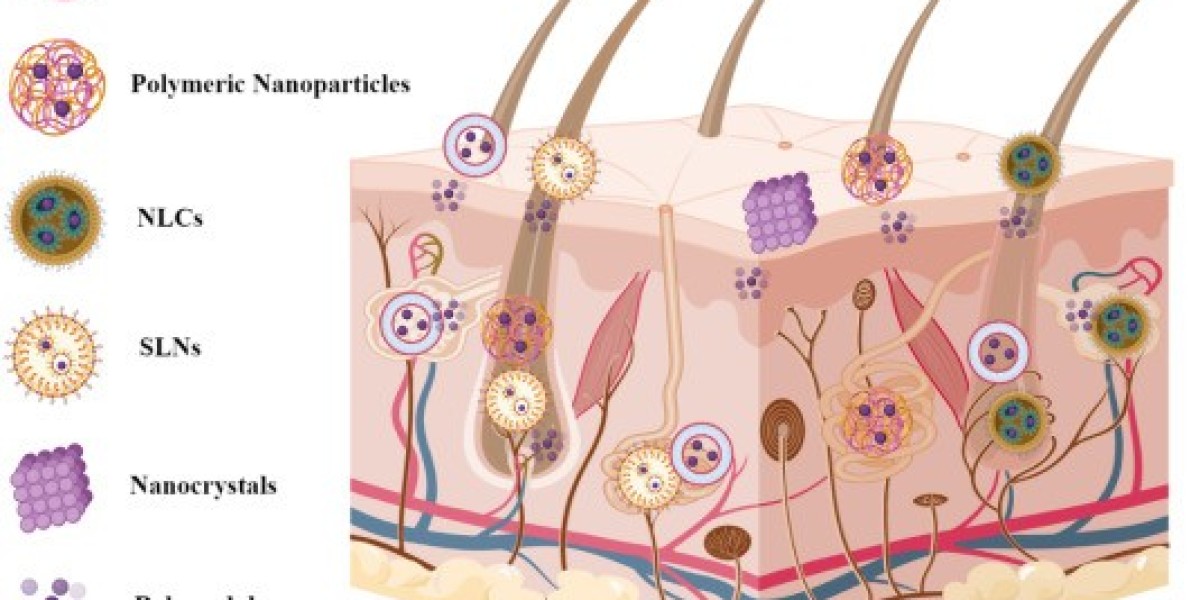Skin Absorption and Permeation of Drugs
However, this barrier also poses challenges for delivering drugs topically through the skin for localized treatment of various dermatological conditions. For a drug to be delivered via the transdermal route, it first needs to penetrate through the various layers of the skin - stratum corneum, viable epidermis and dermis before reaching the systemic circulation. The stratum corneum, consisting of dead skin cells, cornified envelope and lipid lamellae, acts as the major rate-limiting barrier for drug permeation due to its compact structure.
Various Approaches to Enhance Skin Permeation
Over the years, significant research efforts have been undertaken to enhance the permeation of drugs through this barrier. Some of the key approaches adopted include—chemical permeation enhancers, novel drug carrier systems, micro-needle arrays, thermal/electrical methods, etc. Topical Drug Delivery Chemical permeation enhancers work by reversibly disrupting the lipid organization within the stratum corneum to increase drug partitioning into and diffusion through the barrier. Permeation enhancers commonly used include fatty acids, fatty alcohols, surfactants, terpenes, pyrrolidones, etc. Novel drug delivery systems like nanoemulsions, nanosuspensions, nanostructured lipid carriers, polymeric nanoparticles, transfersomes, etc. have also shown promise in augmenting transdermal permeation owing to their small size and ability to bypass the stratum corneum barrier.
Micro-needle arrays function by creating micron-sized wells or pores in the skin through which drugs can be delivered into the viable epidermis and dermis, circumventing the stratum corneum barrier. Technologies utilizing iontophoresis, sonophoresis, electrophoresis, etc. apply an external driving force like electric current or ultrasound to propel ionized or large drug molecules across the skin barrier. Thermal/heat-assisted methods temporarily alter the lipid structure in the outermost skin layers to facilitate drug movement. Collectively, these approaches have enabled successful delivery of an increasing number of drugs via the transdermal route.
Targeted Delivery to Skin Appendages
Another novel strategy being explored is targeted delivery of drugs to the pilosebaceous units and sweat glands present in the skin, which act as natural channels bypassing the stratum corneum barrier. These appendages consisting of hair follicles, sebaceous and sweat glands cover approximately 0.1% of the total skin surface area but provide direct access to the dermal and systemic circulation. Various colloidal carrier systems like nano/microparticles, nanocrystals, lipid vesicles/nanocarriers have been engineered to specifically accumulate and release drugs within these units. Utilizing advanced material characterization techniques, researchers have optimized the size, shape, surface properties of such carriers to enhance selective targeting.
Promising Results with Various Dermatological Conditions
Topical drug delivery via the above approaches have shown efficacy in treating numerous dermatological conditions affecting both superficial as well as deep skin layers. Nanoemulsion formulations of corticosteroids and retinoids have demonstrated better skin permeation and retention profiles compared to conventional creams, leading to improved treatment of psoriasis, acne and other inflammatory skin diseases. Localized delivery of calcineurin inhibitors through transfersomes have resulted in effective relief from atopic dermatitis with minimal systemic absorption and side effects. Transdermal patches integrated with microneedles and iontophoretic systems have enabled once/twice weekly administration of biologics like etanercept for plaque psoriasis. Minimally invasive technologies like acoustic wave propelled microjets encapsulated in phospholipids are yielding promising results for delivery of proteins and nucleic acid drugs to treat genetic skin disorders. Overall, topical drug delivery utilizing physical and technological enhancements provides an attractive non-invasive alternative for localized dermatotherapy.
Regulatory Considerations and Future Prospects
While most transdermal products in the market today use chemical penetration enhancers or employ passive diffusion, the new generation technologies discussed are still being optimized and require extensive evaluation as per regulatory guidelines. For widespread clinical adoption, factors like safety, stability, large-scale manufacturing feasibility, robust quality control need to be thoroughly established through well-designed preclinical and clinical studies. With continued research exploring deeper understanding of skin physiology, structure-property correlates of novel carriers and interactions within skin appendages, it is expected that efficient targeted delivery platforms with versatility to transport diverse molecular classes should emerge. Topical delivery certainly holds immense promise to revolutionize dermatological treatments through localized minimally-invasive administration of conventional as well as modern biologic agents.
this article discussed various approaches that have been employed to enhance topical drug delivery through the skin barrier and their promising application in treating different dermatological conditions. While significant advances have been made, further optimization and large-scale validation of emerging technologies are still required before they can be translated into approvable products and routine clinical use. Continued multidisciplinary research efforts are expected to deliver diverse effective solutions through this convenient non-invasive administration route in the future.
Get more insights on - Topical Drug Delivery
Get More Insights—Access the Report in the Language that Resonates with You.
About Author:
Vaagisha brings over three years of expertise as a content editor in the market research domain. Originally a creative writer, she discovered her passion for editing, combining her flair for writing with a meticulous eye for detail. Her ability to craft and refine compelling content makes her an invaluable asset in delivering polished and engaging write-ups.
(LinkedIn: https://www.linkedin.com/in/vaagisha-singh-8080b91)



